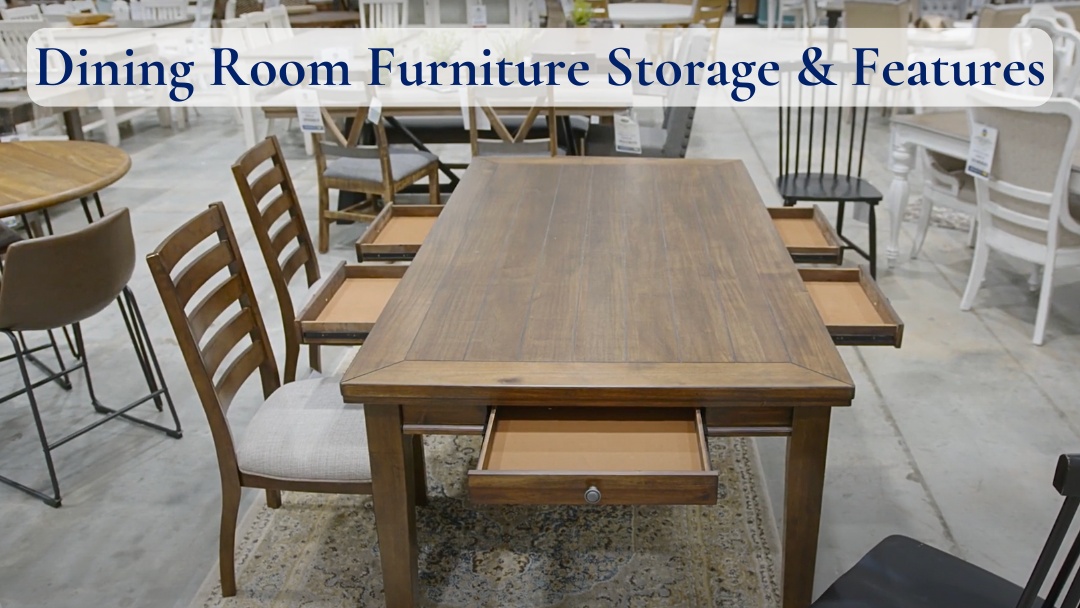In just about any interaction with a customer, excessive industry lingo is the enemy. Imagine you’re shopping for something. It could be literally anything – a car, a home appliance, a smart phone, a guitar, a nice suit, or earbuds. How do you feel when the salesperson starts using a bunch of jargon you’ve never heard before to convince you that they’re selling you a product worthy of your money? It’s so easy to be overwhelmed in these interactions.
Unfortunately, this happens in our industry too. Here at Woodstock Furniture & Mattress Outlet, we don’t want that for you. Whether you’re shopping with us or elsewhere, it’s important to us to help educate furniture shoppers on our industry and its many parts – including furniture construction and all the methods involved.
Maybe you’re shopping for a new dresser or chest of drawers and you see that it’s made with dovetail joinery. Or that the coffee table and end tables you like are made with mortise-and-tenon joints. How about a table crafted using tongue-and-groove joints or biscuit joints? What are these different kinds of woodworking joints, and what do they mean?
Some of these joints are more common than others in the furniture industry. However, if you look closely, you can find these woodworking joints in everything from table tops, to headboards, to chair frames, to dressers, to TV consoles. Join us below for a run-down of 9 common woodworking joints used for crafting furniture and more!
But First, What is Joinery?

Joinery is an umbrella term used within woodworking, carpentry, furniture manufacturing, or construction to describe the different methods used to attach wood or other materials together. Individually, these attachment points are called joints.
What is a Butt Joint?
The butt joint is arguably the easiest and most straightforward woodworking joint.
Why is it called a butt joint? Because this joint is created when two different pieces of wood butt up against each-other – usually at a 90-degree angle. The joint is then fastened with nails or screws. This simple joint is used in almost everything, from furniture frame construction to home building. However, the trade-off for its simplicity is that butt joints aren’t the sturdiest on their own and must often be corner-blocked or braced to increase stability.

A common variation of the butt joint is called a miter joint or mitered butt joint. With a miter joint, each piece of wood is cut at a 45-degree angle. When joined together, it forms a 90-degree angle just like a traditional butt joint. Functionally, it’s the same as a butt joint, but with an extra flourish. Common examples of miter joints would be the edges of a picture frame, or the corners of baseboards and crown molding in your home.
What is a Lap Joint?
Perhaps the only other joint as basic and foundational as the butt joint is the lap joint. With a lap joint, one piece of wood lies flat across another, overlapping it. These joints can be nailed, glued, or screwed. Much like the butt joint above, you’ll find lap joints almost anywhere, from furniture construction to framing houses.

The half lap joint (or notched lap joint) is a more complex type of lap joint where wood is removed from both adjoining pieces so that they sit flush together. This creates a stronger joint because it locks the joint into place on at least one axis and creates more surface area to make glues/adhesives more effective.
What is a Pocket Joint or Pocket Hole Joint?

A pocket joint, also known as a pocket hole joint, is another common joint used in furniture construction. Especially when it comes to entry-to-mid grade furniture, and furniture requiring assembly after purchase.
To make a pocket joint, a hole (or pocket) is drilled through the side of a board at an angle so that the drill bit exits out of the end of the board. Completing the joint only requires setting the board in place and attaching with self-tapping wood screws.
What is a Dowel Joint?

Similarly, the dowel joint is a common feature in just about all grades of furniture, but particularly in shippable, self-assembled furniture. In order to create a dowel joint, a round hole or pocket is drilled into both adjoining pieces of wood. A small, tightly-fitting, cylindrical piece of wood, called a dowel, is then inserted into the hole on both sides. Dowel joints are often reinforced by gluing the dowels in place.
What is a Biscuit Joint?

Let’s take the same principle of the dowel joint above, and change the shape of the dowel from a round peg to a flat, oval-shaped wafer called a biscuit. Congratulations! You now have a biscuit joint. First, a thin, rounded cut is made in both pieces of wood. The pocket is then filled with glue, and the biscuit is put in place, where it naturally expands. Biscuit joints are most often used in furniture construction to make flat table tops, shelves, cabinets, or other pieces where you don’t want visible screws, nails, or holes.
What is a Mortise-and-Tenon Joint?
As you now know, dowel joints and biscuit joints involve carving pockets into both sides and inserting a separate piece into the pockets to join them. By contrast, a mortise-and-tenon joint is essentially any joint with a female and a male end.

A cavity is carved in one piece (the mortise), and a corresponding fitted peg (the tenon) is carved in the other. The joint is typically reinforced with glue. Mortise-and-tenon joints can be almost any shape – square, rectangular, cylindrical, or even polygonal. You’ll find mortise-and-tenon joints in all sorts of furniture, from dining chairs, to desks, to coffee tables.
What is a Tongue-and-Groove Joint?

Unlike many of the other joints on this list, tongue-and-groove joints really are their own thing. The tongue-and-groove joint is used almost exclusively to join two flat pieces together horizontally, end-to-end. On one piece, there’s a protruding lip called a tongue, and on the other, there’s a groove. Both the tongue and the groove usually run the entire length of the board and must be slid into place.
Perhaps the best example of tongue-and-groove joinery that most folks can relate to is the hardwood or laminate flooring in their home. However, tongue-and-groove joints are useful anywhere you want to securely lock multiple flat pieces of wood or material together.
What is a Box Joint?

The box joint is both simple and complex. It is simple in the sense that each cut is made at a right angle. It is complex because box joints require a great many cuts to both pieces of wood. Essentially, with a box joint, a series of complementary, interlocking pieces are cut in both sides of the wood and then inserted into each-other to form a 90-degree corner. Within our industry, this joint can be used to make drawers, wooden chests or boxes.
What is a Dovetail Joint?

Think of the dovetail joint as the sturdier, more durable, evolution of the box joint. Much like the box joint, dovetail joints are often used to craft drawers or other box-like structures. However, instead of a series of simple, intersecting square or rectangular fingers, the cuts on a dovetail joint are tapered at an angle and wedge-shaped. These interlocking pieces are called tails on one side and pins on the other. These angled cuts make the dovetail joint extremely secure and durable, even without fasteners.
Additionally, there are two popular types of dovetail joints – the English dovetail and the French dovetail. The quick-and-easy explanation is that English dovetails involve a series of tails and pins repeated in a pattern, while French dovetails (also known as sliding dovetails) involve a single long tail slid into place between pins. For more info on French and English dovetails and how they differ, be sure to read our article linked above!
Learn More About Quality Furniture Construction, Including English Dovetails, French Dovetails, Different Kinds of Table Leaves & More!
Congratulations! Now you know the most common woodworking joints used in furniture construction and beyond. Next time you go shopping for a new chest, dresser, dining table, or other wood furniture, you’ll have a better understanding of these terms when you inevitably see them on product tags or descriptions.
Still confused on the differences between English dovetail and French dovetail joints? Wondering why dovetail joints matter or why they’re considered a premium feature? For a deeper dive into one of the furniture industry’s most important joints, don’t miss our article on dovetail joints. Additionally, we also have tons of other resources on furniture construction available – from the different kinds of dining table leaves, to upholstery suspension systems.
Finally, whether you’re shopping for quality veneer or solid wood furniture, we have plenty of pieces with premium build quality and high-end features like English dovetail, French dovetail, and mortise-and-tenon joints. Our helpful furniture experts would love to show you some beautiful examples at any of our North Georgia furniture stores. Hope to see you soon!








